When it comes to Wyoming, picking the best places to visit feels like trying to choose between stars in a clear night sky – each one shines in its own special way. From the rugged peaks of the Tetons to the rainbow-colored hot springs of Yellowstone, Wyoming serves up natural wonders that seem almost too good to be real. The state’s wide-open spaces tell stories of wild west history, while small towns tucked between mountain ranges offer warm welcomes and authentic charm you just can’t find anywhere else.
We’ve rounded up spots that showcase Wyoming from every angle – national parks that make you feel tiny against nature’s canvas, hidden trails that lead to unexpected discoveries, and historic sites that bring the frontier days back to life. Whether you’re looking to spot wildlife in their natural habitat, soak in geothermal pools, or walk in the footsteps of cowboys, these 18 places capture the true spirit of the Cowboy State.
Consider this your friendly guide to Wyoming’s most remarkable destinations – some you might know, others might surprise you, but each one promises memories that’ll stick with you long after you head home.
- Best tourist destination: Yellowstone National Park
- Underrated hidden gem: Wind River Range
- Best for families: Jackson Hole Mountain Resort
- Best for couples: Grand Teton National Park
- Best for solo travelers: Cody
- Best for history buffs: Fort Laramie
Yellowstone National Park
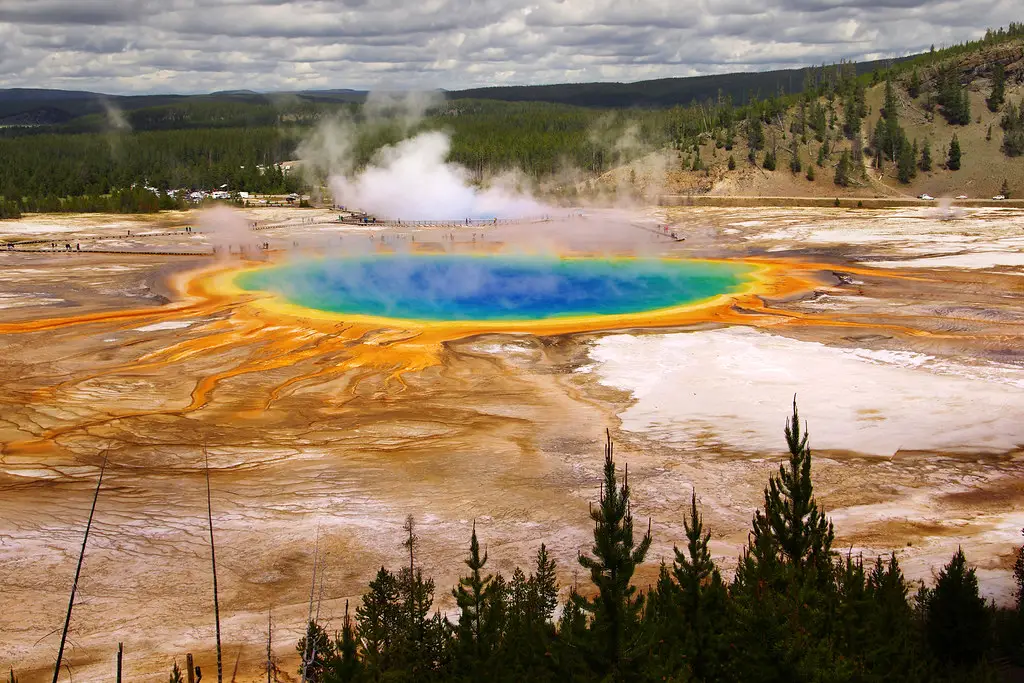
Step into a world of natural wonders at Yellowstone National Park, America’s first and most famous national park. Watch Old Faithful erupt on schedule, sending steaming water up to 180 feet into the air, or take a walk along the rainbow-colored Grand Prismatic Spring. The park’s 2.2 million acres are home to free-roaming bison, elk, and grizzly bears, making it perfect for wildlife viewing from a safe distance. For an unforgettable experience, book a stay at the historic Old Faithful Inn, where you can enjoy dinner overlooking the geyser basin, or camp under the stars at one of the park’s many campgrounds.
Grand Teton National Park
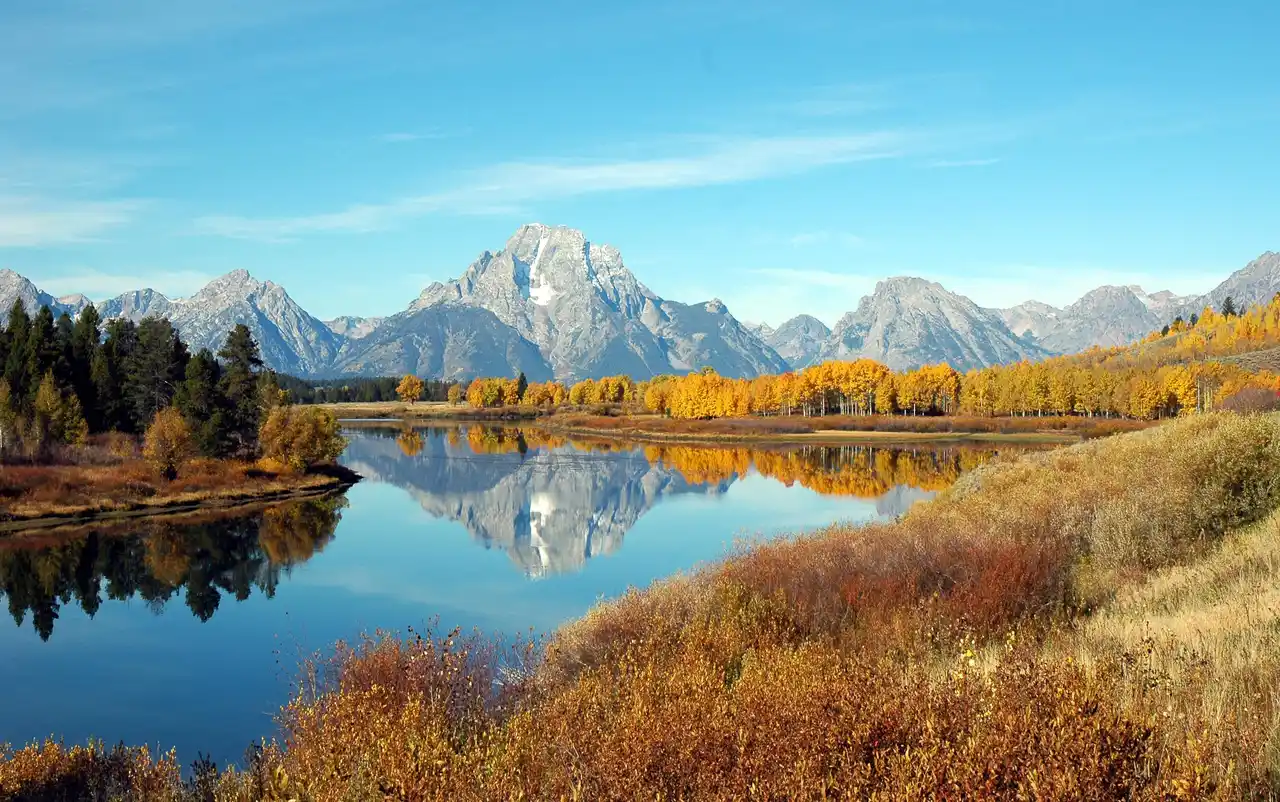
Of all the national parks I’ve explored in America, Grand Teton holds a special place in my heart. The park’s jagged mountain peaks shoot straight up from the valley floor, creating one of the most distinctive skylines you’ll find anywhere in the Rockies. This is where seasoned climbers test their skills on rocky faces while everyday visitors spot moose wandering through sage-covered meadows or paddle across the mirror-like surface of Jenny Lake. It’s not just another mountain park – the way the Tetons rise without foothills makes you feel like you can reach out and touch them, even from miles away. Those who spend time here quickly discover why it’s become a favorite among photographers and wildlife watchers who return season after season.
Jackson Hole
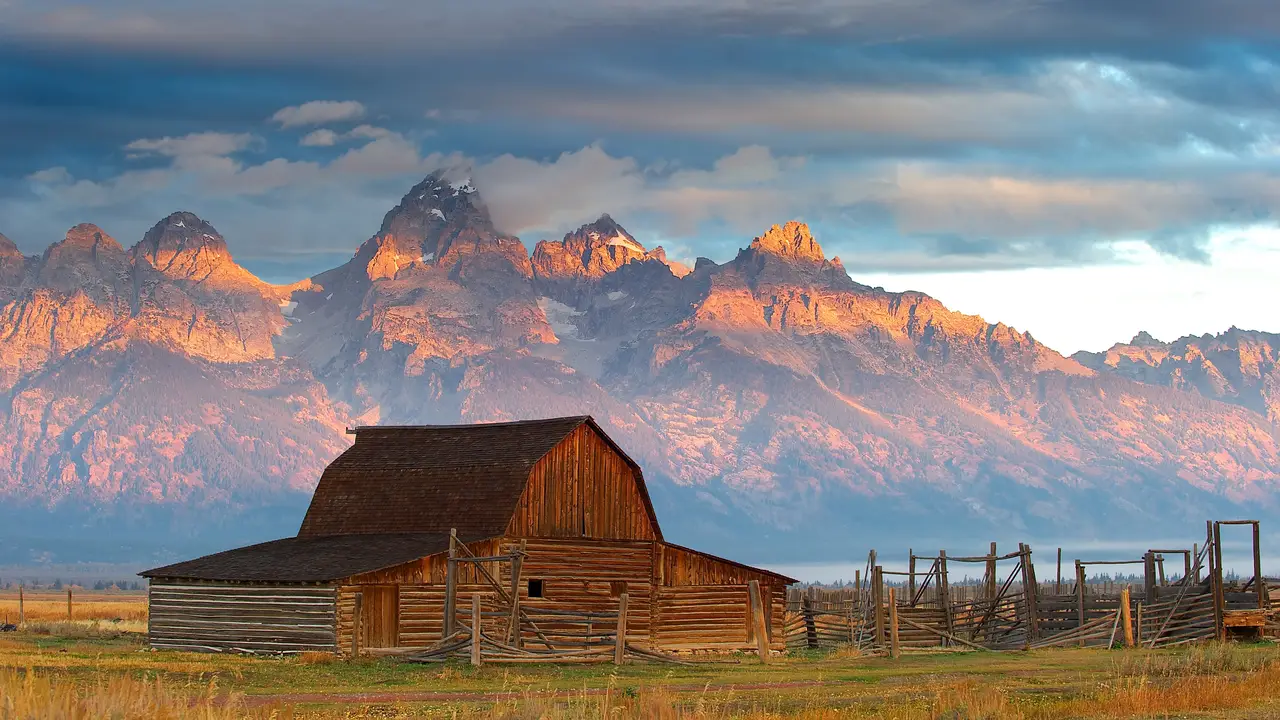
Experience the magic of the Old West in Jackson Hole, where snow-capped mountains meet wide-open valleys. This mountain town serves up adventure year-round, from world-class skiing at Jackson Hole Mountain Resort in winter to hiking through Grand Teton National Park in summer. Stop by the famous Town Square with its iconic elk antler arches, where you can hop between local shops and restaurants. For wildlife lovers, head to the National Elk Refuge, where thousands of elk gather during winter months. Don’t miss the chance to visit one of the rustic downtown saloons, where you can kick back with a cold beer and listen to live country music just like the cowboys of yesteryear.
Cody
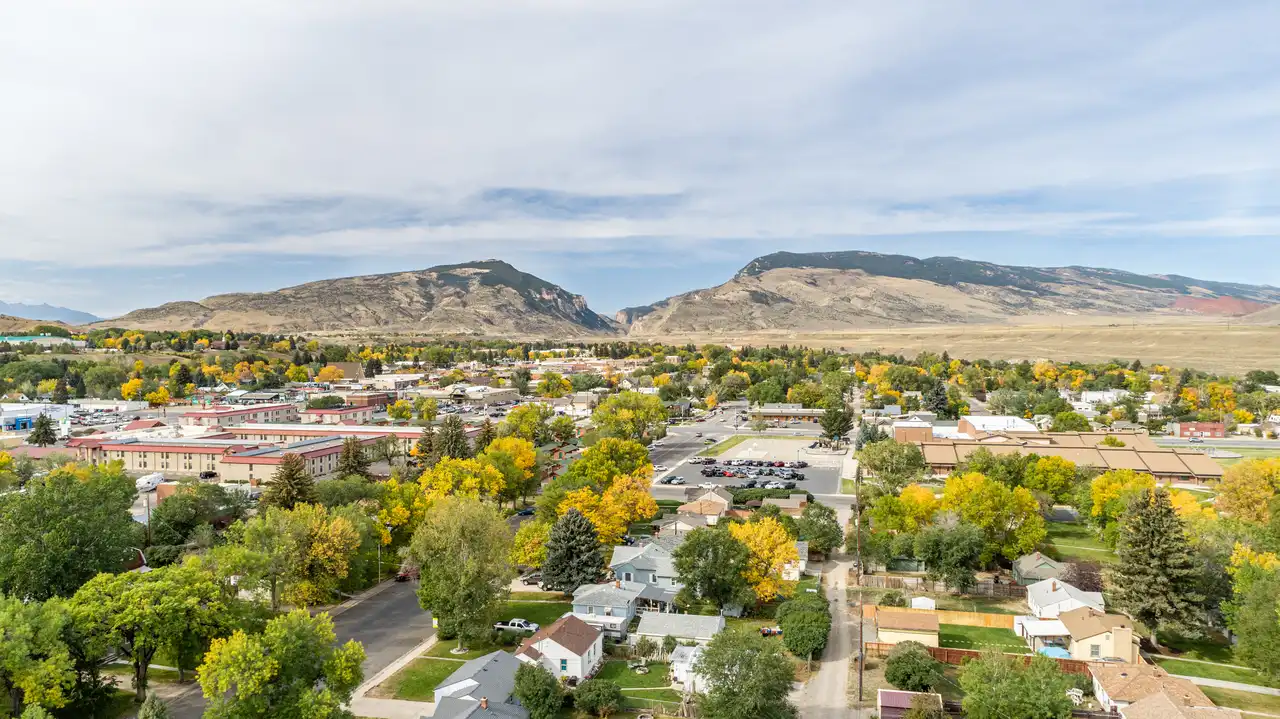
Just about 50 miles east of Yellowstone sits the town of Cody, a place that feels like the Old West come to life. Like many Wyoming towns, Cody has its share of outdoor activities, western shops, and local diners. But what sets it apart is how deeply rooted it is in cowboy culture. Listen for the evening gunfight reenactments in summer, or watch real cowboys compete at the nightly rodeo, and you’ll see what I mean. Because Buffalo Bill Cody founded this frontier town in 1896, you’ll find his influence everywhere – from the world-class Buffalo Bill Center of the West to the historic Irma Hotel he built for his daughter.
Buffalo Bill Center of the West
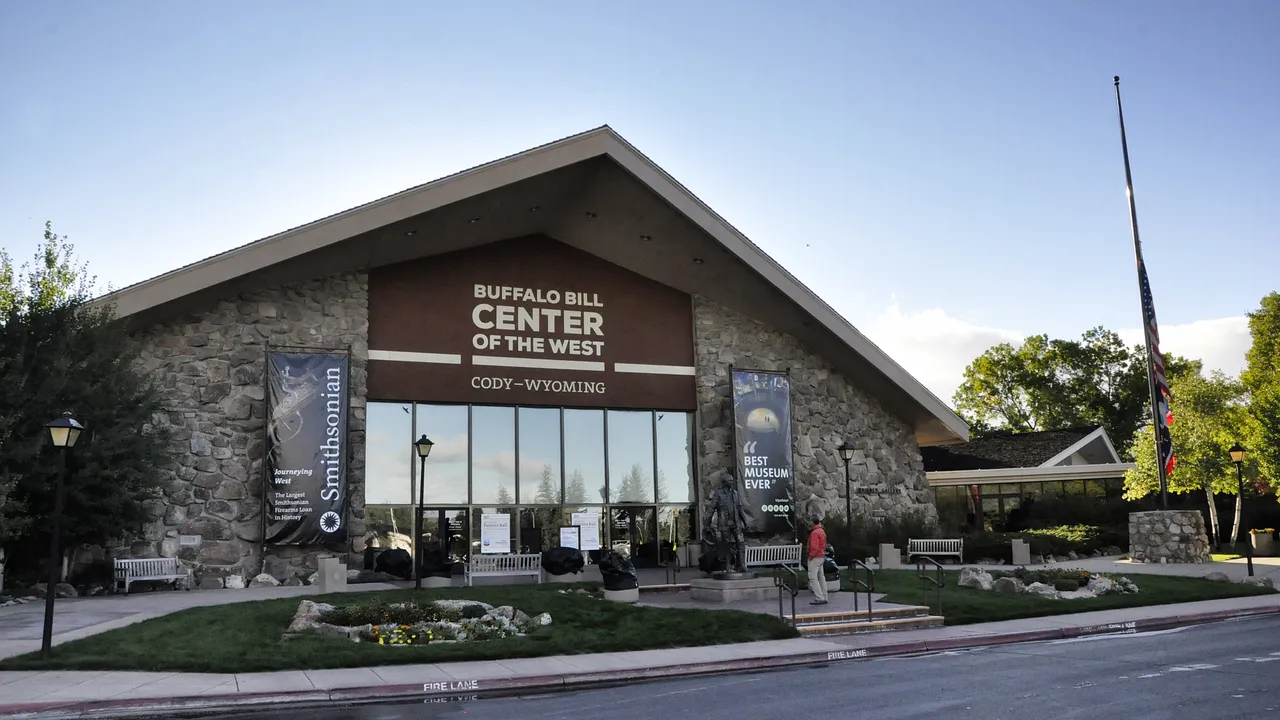
If you’re curious about the American West, the Buffalo Bill Center of the West is a must-visit spot in Cody, Wyoming. Located just an hour from Yellowstone National Park, this world-class complex features five distinct museums: the Buffalo Bill Museum, Plains Indians Museum, Whitney Western Art Museum, Draper Natural History Museum, and the Cody Firearms Museum.
Hot Springs State Park
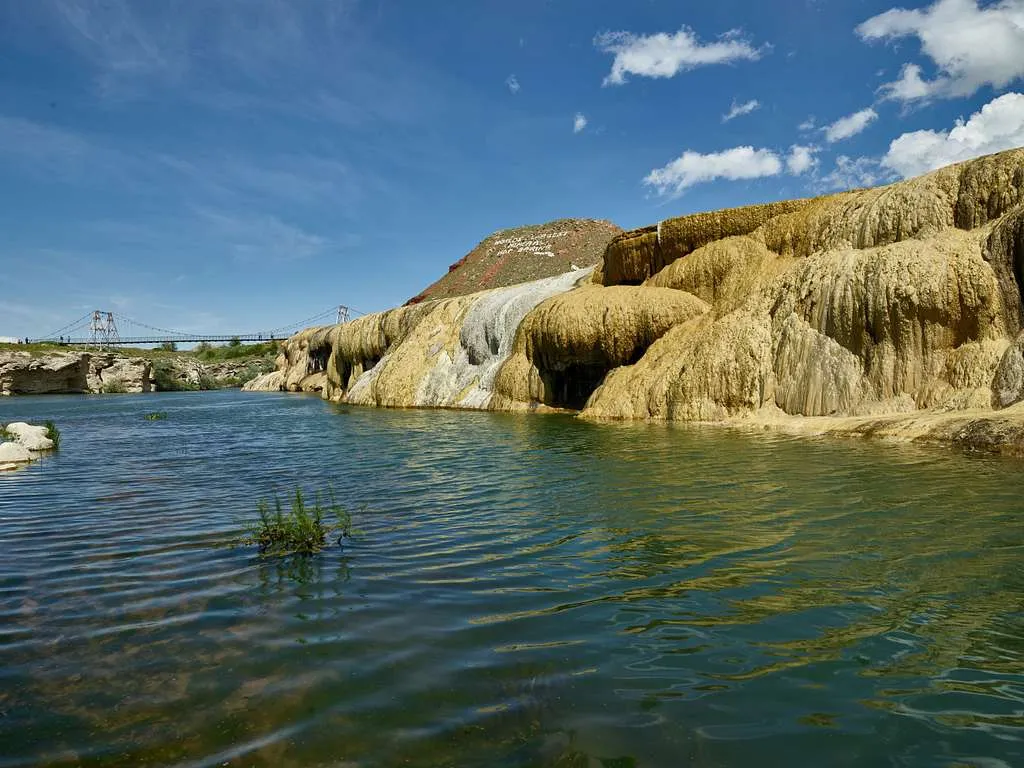
Hot Springs State Park in Thermopolis is where you’ll want to head for a relaxing soak in Wyoming’s natural thermal waters. The park’s centerpiece is a series of mineral-rich springs that maintain a toasty 104°F year-round, with the free State Bath House letting visitors take a dip in these therapeutic waters just like the Native Americans did centuries ago. The park also features a network of rainbow-colored travertine terraces formed by the flowing hot springs, plus walking paths where you might spot buffalo grazing against the backdrop of Wind River Canyon.
Wind River Range

Get away from the crowds and discover true mountain wilderness in the Wind River Range, a 100-mile stretch of jagged peaks and pristine alpine lakes. This hidden gem offers over 40 peaks above 13,000 feet, making it a paradise for hikers and climbers looking to test their skills. Set up camp near one of the 1,300 lakes scattered throughout the range, where you can fish for trout or simply take in the mountain views. For serious adventurers, the Continental Divide Trail runs right through the heart of the range, offering multi-day backpacking opportunities through some of Wyoming’s most remote terrain.
Flaming Gorge National Recreation Area
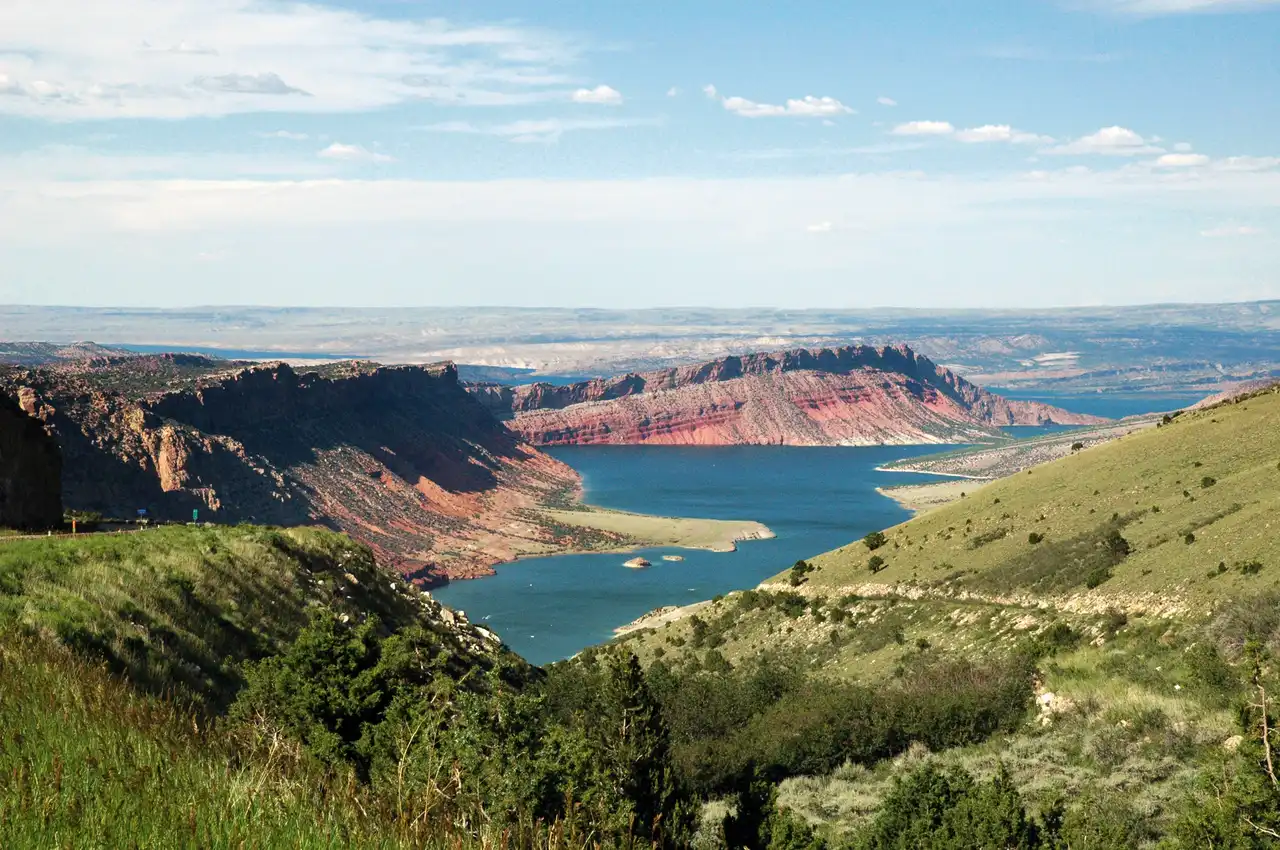
Experience the rugged beauty of the American West at Flaming Gorge National Recreation Area, where red rock cliffs tower above emerald waters. This 91-mile reservoir offers endless opportunities for boating, fishing, and water sports, with rainbow trout and kokanee salmon drawing anglers from across the country. Take a scenic drive along the Flaming Gorge-Uintas National Scenic Byway, or explore over 100 miles of hiking trails that wind through desert landscapes and pine forests. For overnight stays, choose from several campgrounds and lodges nestled along the shoreline, where you can wake up to views of the colorful canyon walls reflecting in the crystal-clear water.
Medicine Bow National Forest
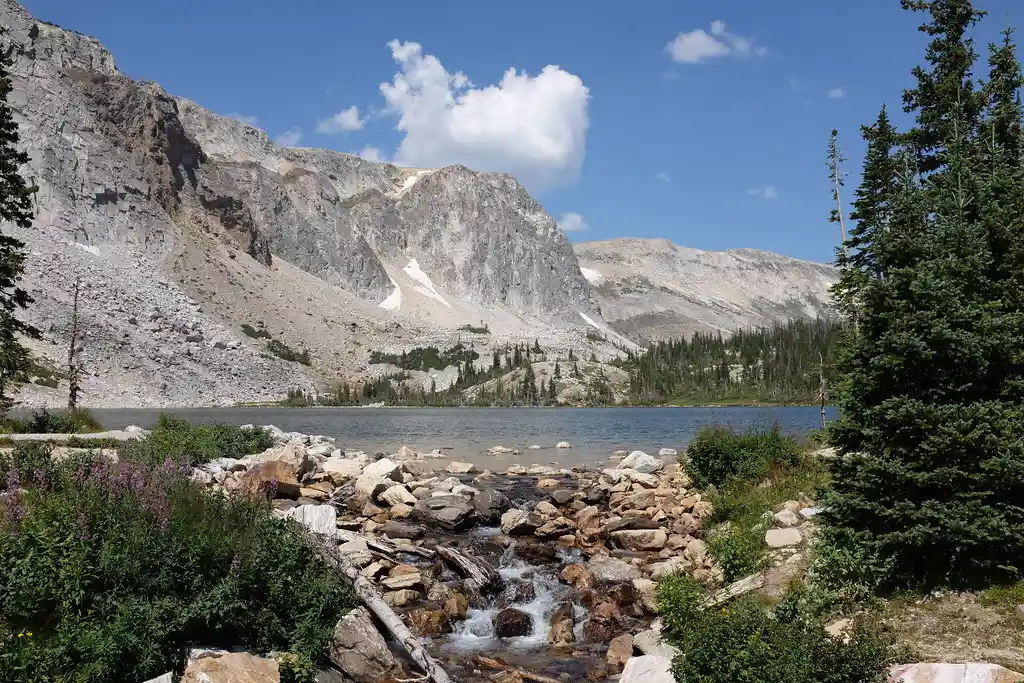
Step into Wyoming’s outdoor playground at Medicine Bow National Forest, where over a million acres of wilderness await your exploration. The forest stretches across southeastern Wyoming, offering visitors endless opportunities for hiking, camping, and wildlife watching throughout its diverse terrain. You can spend your days trekking through pine-covered mountains, fishing in crystal-clear alpine lakes, or setting up camp beneath the stars. For a memorable photo op, head to Mirror Lake, where the still waters perfectly reflect the surrounding peaks, or drive the 29-mile Snowy Range Scenic Byway for sweeping views of the landscape.
Fort Laramie National Historic Site
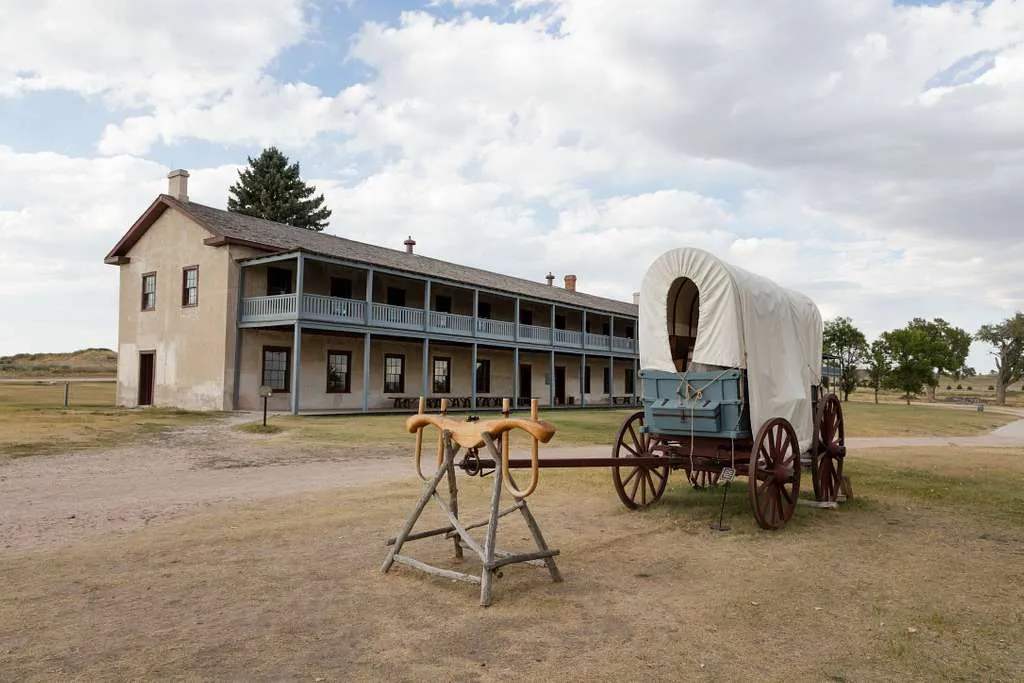
Nestled in eastern Wyoming along the North Platte River sits Fort Laramie, one of America’s most important 19th-century military outposts. Originally established as a fur trading post in 1834, it evolved into a crucial stop for pioneers heading west on the Oregon Trail. Today, walking through the restored buildings feels like stepping straight into the Old West – you can almost hear the wagon wheels creaking and soldiers’ boots marching across the parade ground. Unlike many historic sites that just display artifacts behind glass, Fort Laramie lets you wander freely through officer quarters, barracks, and trading rooms that look exactly as they did in the 1800s. Because of its strategic location between the plains and mountains, the fort became a key site for treaty negotiations with Native American tribes and a bustling hub for thousands of westward-bound emigrants.
Bighorn Canyon National Recreation Area
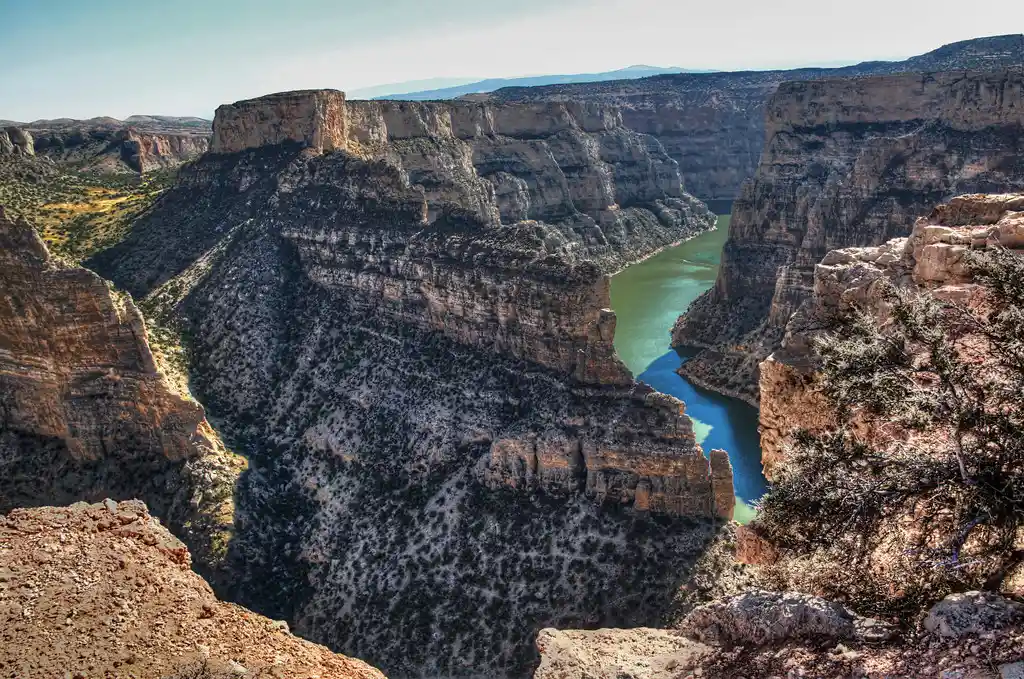
I first visited Bighorn Canyon on a road trip through Wyoming in 2019. Carved by time and the Bighorn River, this natural wonder stretches for miles along the Montana-Wyoming border, creating one of the most impressive canyon systems in North America. Red-hued cliffs tower up to 1,000 feet above the water, while bighorn sheep navigate the rocky terrain with enviable ease. The clear waters of Bighorn Lake, formed by the Yellowtail Dam, offer excellent opportunities for boating and fishing, with anglers regularly pulling in trout and bass. Several hiking trails wind through the recreation area, including the Sykes Mountain Trail, which rewards visitors with panoramic views of the canyon and the distant Pryor Mountains. The landscape here feels untamed and raw, much like it did when the Crow people first called these dramatic cliffs home.
Old Faithful
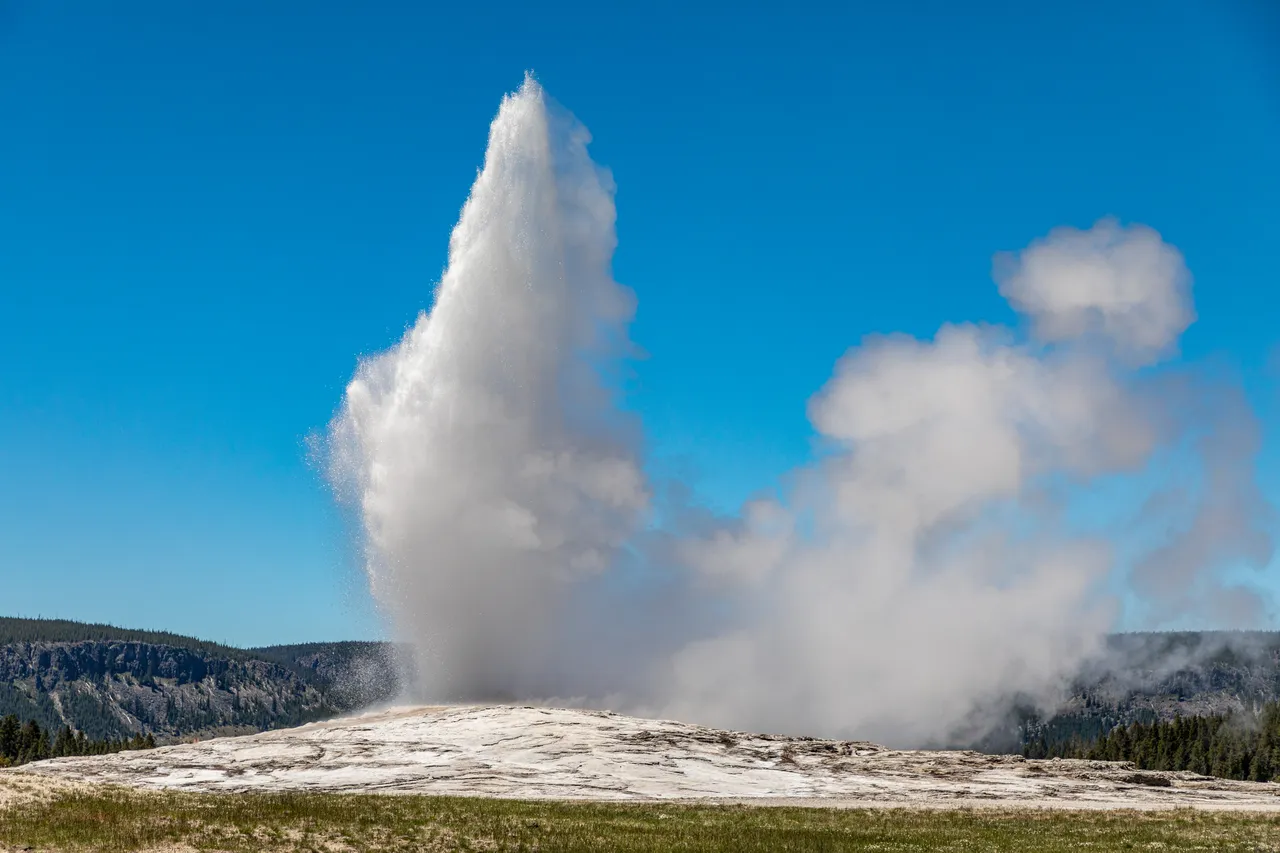
Watch nature’s most famous geyser put on a show at Old Faithful, Yellowstone National Park’s iconic landmark. This reliable wonder erupts about every 90 minutes, shooting hot water up to 180 feet into the air. Take a seat on the surrounding benches to watch the spectacle alongside hundreds of other visitors, or grab a meal at the historic Old Faithful Inn while you wait for the next eruption. For a different perspective, hike up to Observation Point, where you can look down on the geyser and surrounding thermal features from 250 feet above.
Jenny Lake
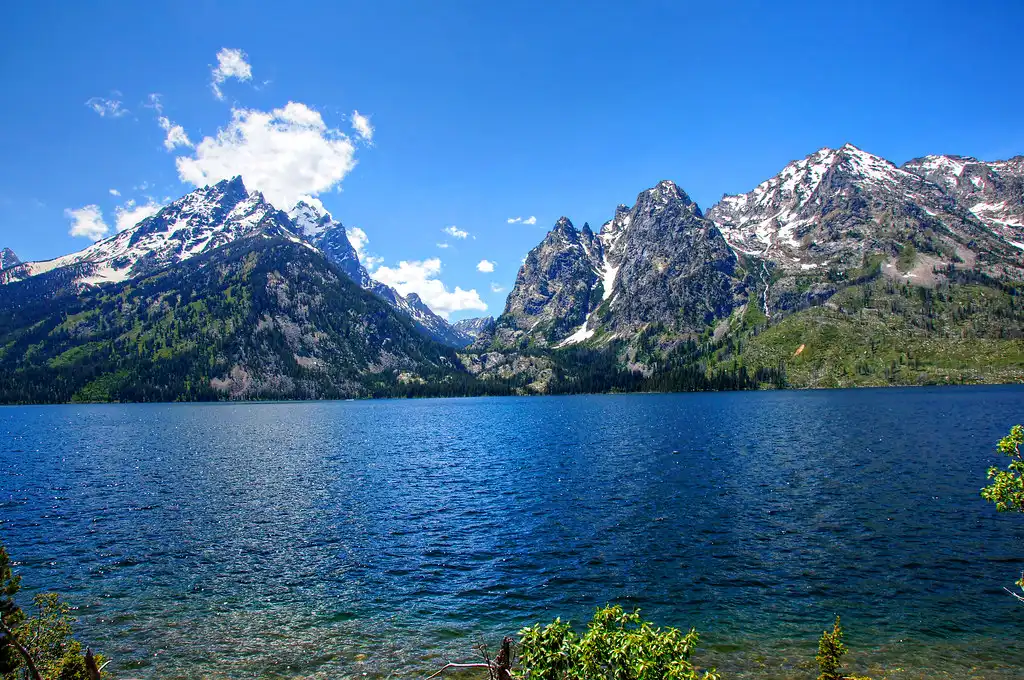
Looking for a slice of pure Wyoming magic? Jenny Lake sits like a jewel at the foot of the Teton Mountains, reflecting the jagged peaks in its crystal-clear waters. This pristine alpine lake, formed by ancient glaciers, draws visitors who come to hike the 7.1-mile loop trail around its shores or take the scenic boat ride across. You can spot moose wading in the shallows at dawn, or black bears foraging along the forest’s edge. The lake serves as the perfect launch point for adventures into Cascade Canyon, where wildflowers carpet the ground in summer, and the sound of rushing water follows you up the trail. Cascade Falls, hidden just a short hike from the boat dock, offers a perfect excuse to pause and cool off on warm afternoons.
Cheyenne
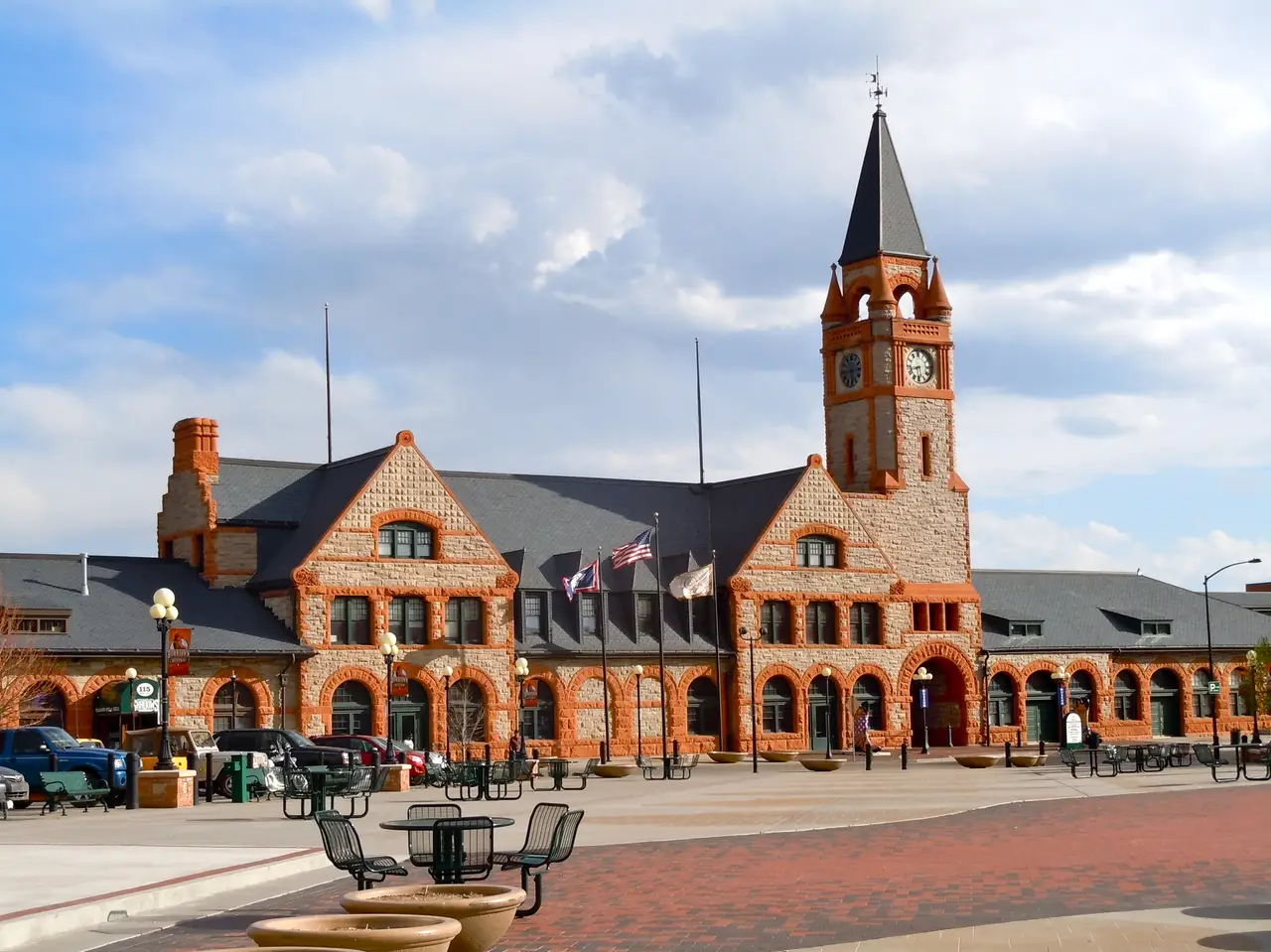
As Wyoming’s capital city, Cheyenne sits at the crossroads of cowboy culture and political power. Unlike other western towns that traded their frontier spirit for modern development, Cheyenne holds tight to its Wild West roots while embracing its role as a government hub. Just watch the locals in pressed suits mixing with cowboys in worn leather boots at the local diners, and you’ll get the picture. Thanks to its position along the historic Union Pacific Railroad, the city grew from a tiny railroad town into a legitimate capital, and you’ll find grand 19th-century mansions alongside rustic saloons. During the annual Frontier Days in July, the city explodes with what locals proudly call “the world’s largest outdoor rodeo,” complete with bull riding, chuck wagon races, and enough barbecue to feed a cattle drive.
Shell Falls
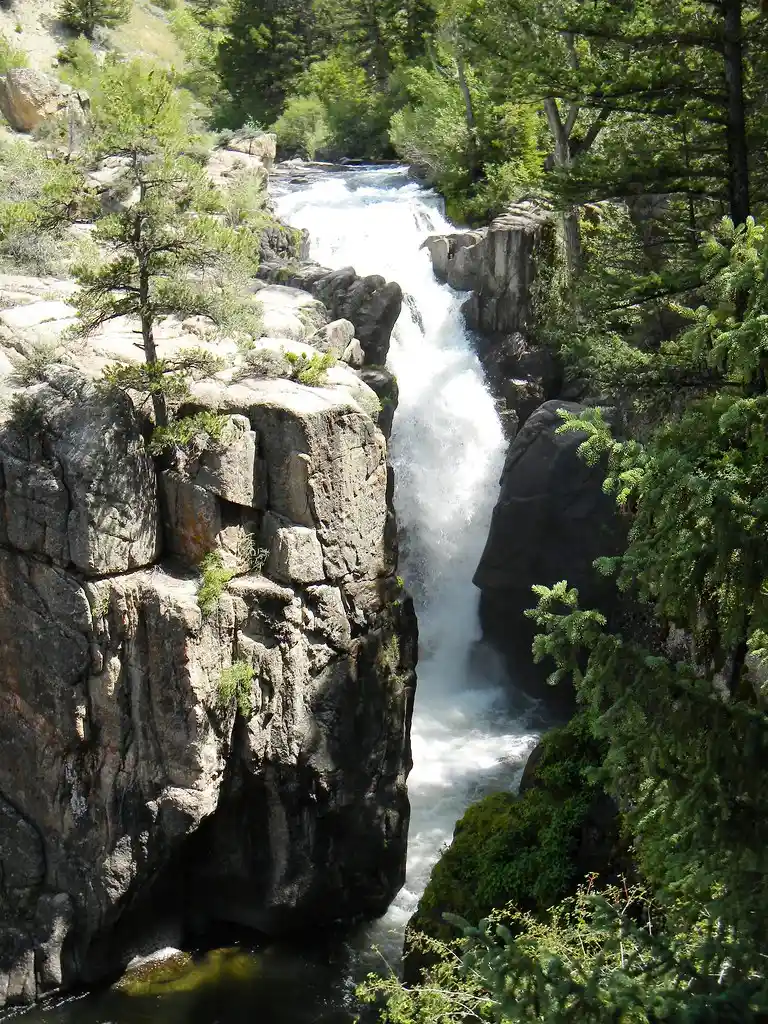
Have you ever watched 120 feet of pure mountain water tumble down through ancient limestone? That’s exactly what you’ll find at Shell Falls, tucked away in Wyoming’s Bighorn Mountains. This natural wonder churns out over 3,600 gallons per second as it cascades through a narrow canyon, where 2.5 billion years of geological history is on display. You can take in the falls from an accessible viewing platform, explore the visitor center to learn about local wildlife and geology, or venture onto nearby hiking trails that wind through the pine-scented forest. It’s also a perfect stop along the Shell Creek Canyon Scenic Byway, where mountain goats often perch on rocky outcrops above the rushing water.
South Pass City State Historic Site
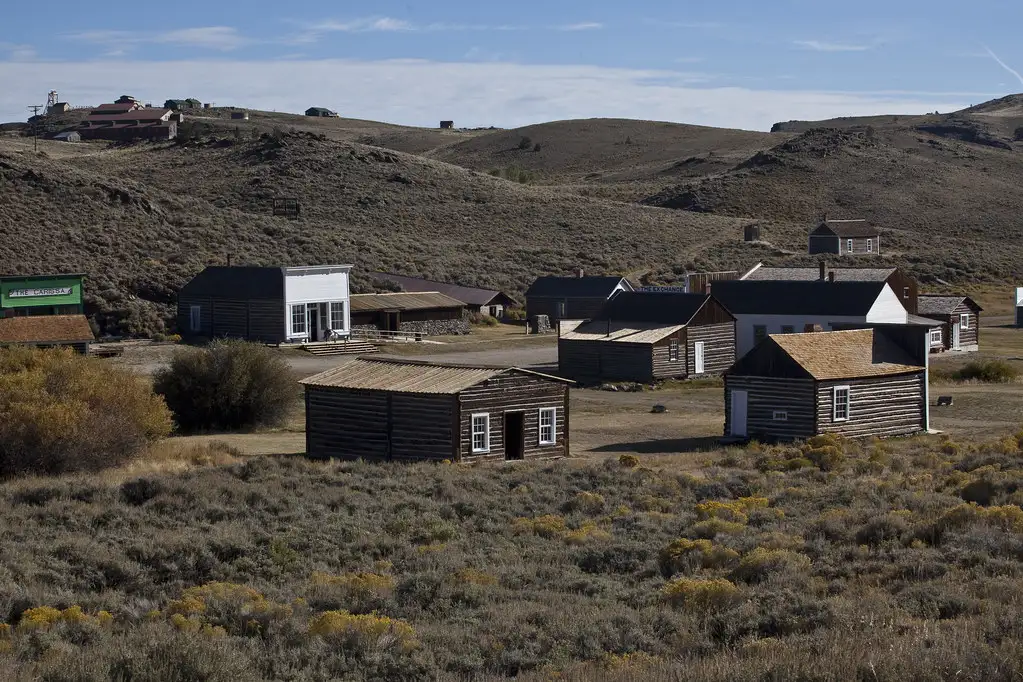
Looking for a genuine taste of Wyoming’s gold rush past? South Pass City State Historic Site takes you right back to the 1860s, when prospectors flocked to these hills in search of fortune. This remarkably preserved ghost town sits along the historic Oregon Trail, where nearly 50 original structures still stand, telling tales of pioneers, miners, and settlers who shaped the American West. You can wander through the old general store, peek into the saloon where miners once gathered, and even try your hand at gold panning in Willow Creek. It’s not just a museum – it’s a complete snapshot of frontier life frozen in time, giving visitors a real sense of what it was like to live in Wyoming’s earliest days.
Buffalo
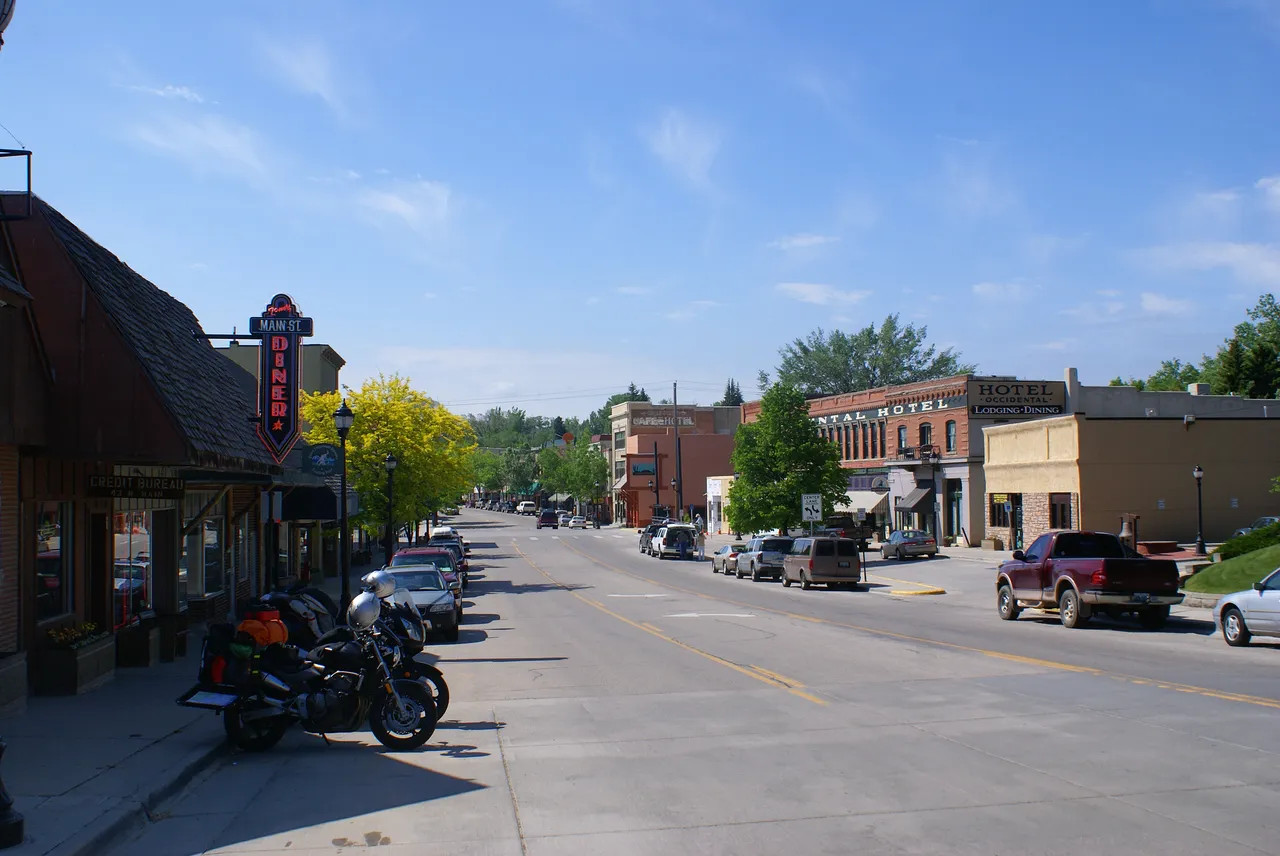
Many travelers head to Buffalo for its rich cowboy heritage and the Bighorn Mountains that frame this historic Wyoming town. Located at the foothills of these majestic peaks, Buffalo offers both a glimpse into the American West’s past and access to outdoor adventures. The Historic Occidental Hotel, dating back to 1880, stands as a testament to the town’s frontier days, while the nearby Cloud Peak Wilderness draws hikers and campers looking to explore its network of trails. Throughout the year, Buffalo hosts events celebrating its western culture, including the Longmire Days festival, but visitors can always find ways to experience authentic cowboy charm in this welcoming mountain community.

